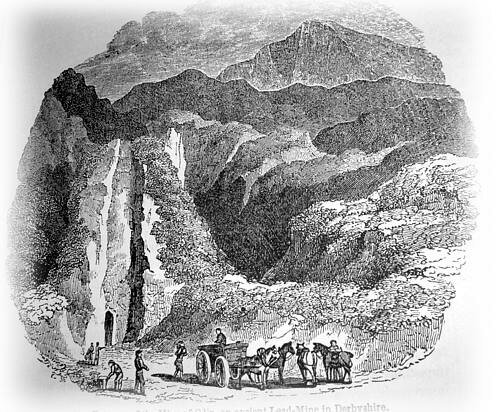Earl Waltheof
The important manor of Hallam with 16 berewicks was in the possession of Earl Waltheof at the Conquest and probably until 1076, when the earl lost his life for conspiring against the king. His widow, Judith the countess, who was niece to William I, was permitted to retain the manor, and at the time of the Survey it was held of her by Roger de Busli, or Builli. Roger also held the manor of Ecclesfield, where at the Conquest 6 thegns had owned as many manors. One of these thegns was Elsi, whose land was not incorporated in the later honor of Hallam, but in that of Tickhill. The land of one or more of the other 5 thegns seems to have been included in the first-named honor.

From the Domesday extracts, it is evident, that after the Conqueror had parcelled out its lands among his followers, the hall of the Saxon Earl Waltheof was standing within the manor of Hallamshire. Few of these aula or halls are mentioned in the Domesday Book; and where they do appear, they are generally found in the manors possessed by the Saxon nobility. Only one other is noticed in the Wapentake of Strafford, to which division the honour of Tickhill has since been added. This aula was at Laughten-en-le-Morthen , and its Saxon lord was Edwin, Earl of Mercia. The hall of Earl Waltheof stood near the banks of’ the Rivelin. In 1781, a husbandman, Edward Nichols, in ploughing a piece of common land, called The Lawns, on the Stannington side of the Riveling, found two Romam manumission plates both bearing inscriptions, of which the greatest portion was legible. Hunter gives the following as what appears to be the inscripion on the more perfect of these: -

The Emperor Hadrian, in the consulship of C. Julias Gallus, and C. Vallerius Severus, grants to certain strangers who had served in the Roman armies, and being honourably dismissed the service, the privileges of Roman citizenship; which he extends also to the wives of those already married, and to the first wife who might be taken by the unmarried, to their children and posterity, with all the benefits of the jus connubium
With the discovery of several Roman coins in this area, plus the nearby river and the Iron Mines the probabilities are strong, that while the Romans and the Saxons had possession of Britain, the iron-mines of Sheffield afforded employment to a considerable number of’ persons; to draw the ore from its bed; to extract from it the metal; and in fabricating weapons.

Of the three last Saxon owners of the land which now forms the parish of Sheffield, two were dispossessed by the Normans, soon after the Conquest, but Earl Waltheof met with a different fate. He was a man of pre-eminent note and was the son of Siward, the Dane, who led the armies of Edward the Confessor against Macbeth. His mother was the daughter and heiress of Aldred, the Saxon Earl of Northumberland.
He consented to become the subject and, relative of the Conqueror, taking as his wife the King’s niece, the Countess Judith, and receiving with her the three Earldoms of Northumberland, Huntingdon, and Northampton. He conspired, with Ralph de Waer, against the life of the King, for which offence he suffered death at Winchester, in 1075, being, it is said, the first example of beheading in England.
Waltheof's lands, including Hallamshire, were retained by his wife Judith. However, after she refused a second marriage to the Norman knight Simon Saint Liz, William confiscated much of her lands and handed them to her eldest daughter Maud, who was married to Saint Liz in her stead. After the death of Saint Liz, Maud married David, the heir to the crown of Scotland, and the Waltheof's lands were passed to him. However, Judith may have been allowed to retain Hallamshire, as the Domesday book states that the manor of Hallam was held by Roger de Busli "of the Countess Judith". The exact nature of the arrangement between Judith and de Busli is unknown, however there is evidence that such an arrangement may have continued for a number of centuries - an inquisition following the death of Thomas de Furnival in 1332 found that his ancestors had held the manor of Sheffield "of the King of Scotland"
